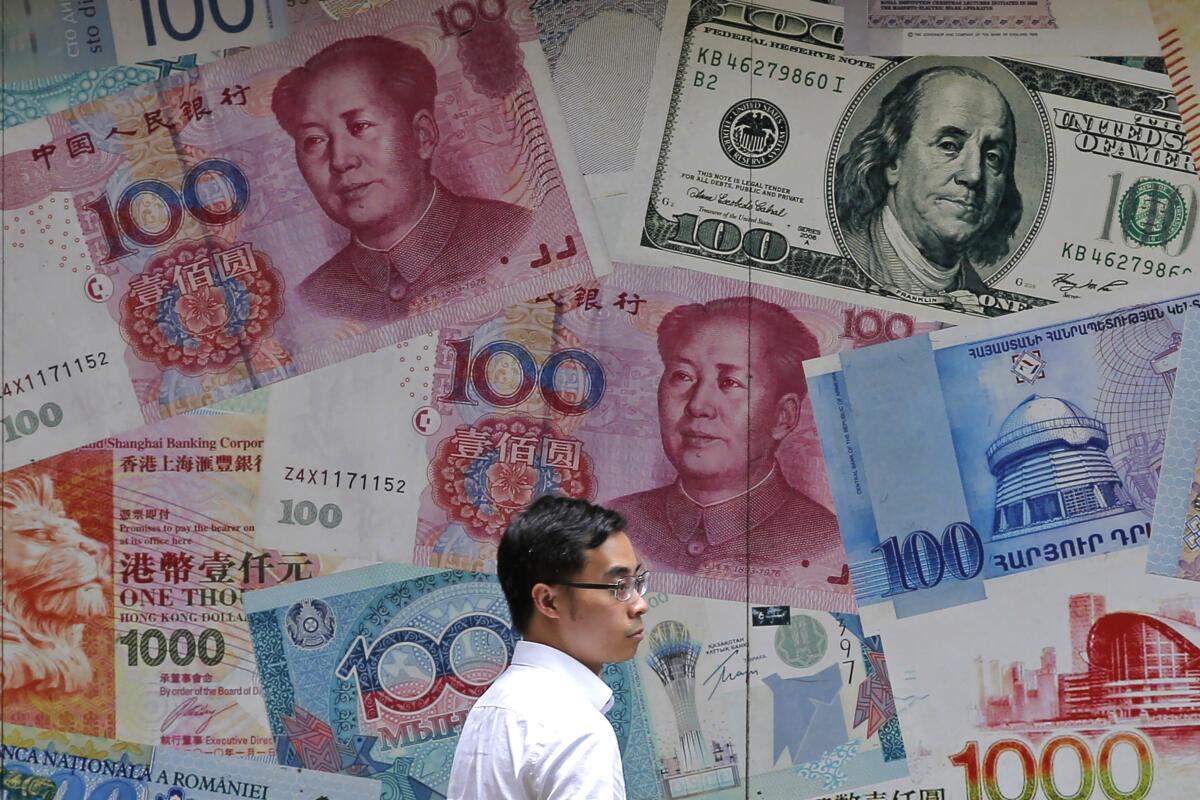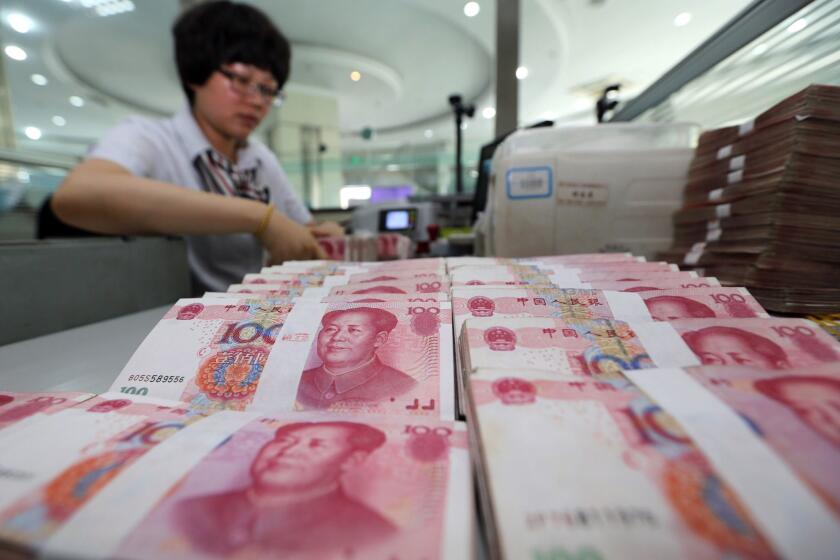Trump wants a weaker dollar, but he keeps strengthening it with his trade war

- Share via
No wonder he’s frustrated: President Trump’s intensifying battle with China and other major trading partners is turning into a global currency war, and it will be hard for him to win both.
The president once again bemoaned the dollar’s strength Thursday, calling in a tweet for policymakers to slash interest rates. Yet the trade tensions he has stoked have supported the currency this year.
They’ve boosted demand for the greenback by helping fuel a mammoth bond rally as investors seek out the safest assets, particularly Treasury issues. Foreign ownership of U.S. government debt has swelled to record highs, pushing yields to the lowest since 2016 on 10-year notes, a benchmark for global borrowing.
Trump has repeatedly nagged the Federal Reserve to cut borrowing costs while complaining that the dollar is too strong. If the Fed cuts interest rates further this year, the monetary easing may actually shore up the U.S. economy, supporting the dollar. And that may only add to Trump’s frustration. Options traders this week increased their wagers on a weaker yuan versus the dollar.
“Whether President Trump can win the trade war and the ‘FX war’ seems rather doubtful,” said Kit Juckes, a global strategist at Societe Generale in London. “If he wants a weaker dollar, he should want a stronger yuan and euro. Unfortunately for him, this trade rhetoric has had the opposite effect.”
The Europeans and Japanese might be most at risk in this arm-wrestling between the world’s two most powerful countries.
The dollar has strengthened about 2.5% against the euro and 2.4% against the onshore yuan this year and is holding near its 2019 high on a trade-weighted basis. Trump’s latest threat of more tariffs on Chinese goods helped push the yuan past a psychological threshold of seven per $1, the level defended by the authorities in the past.
“The Fed’s high interest rate level, in comparison to other countries, is keeping the dollar high, making it more difficult for our great manufacturers like Caterpillar, Boeing, John Deere, our car companies, & others, to compete on a level playing field,” the president tweeted.
Hours earlier, the yuan edged higher against the dollar after China’s central bank set the daily yuan rate stronger than analysts expected, providing some reassurance to traders rattled by a tumultuous week in markets.
Options traders are paying more to bet on the dollar strengthening versus the yuan in the next three months, according to currency options prices. Nordea Bank on Thursday raised its forecast for the dollar, citing factors including the “escalated tariff war.”
The question now is whether China will allow that to happen, and what Trump may do in response.
In the eyes of some analysts, further yuan weakness could raise the risk of currency intervention by the United States to weaken the dollar. It hasn’t taken that step since 2000, when it joined an international effort to support the euro.
Intervention carried out for more than a few weeks could backfire and become supportive of the dollar, according to an analysis by UBS Group. For it to work, U.S. growth and carry advantages must both be blunted while the growth outlook in China and Europe improves, UBS said. That’s not a scenario economists expect.
“The more likely outcome of the explicit currency war would be further extension of uncertainty, which ironically could prove to be dollar-positive if risk assets fear weaker growth and volatility pushes higher,” UBS strategists including Bhanu Baweja wrote in a note. They said it would also “shift rate differentials in the dollar’s favor, albeit with a lag” as other central banks respond with dovishness.
Three central banks across the Asia-Pacific region delivered surprise interest rate decisions Wednesday: New Zealand and India led with bigger-than-expected interest rate cuts, and Thailand’s 25-point reduction surprised all but two economists in a Bloomberg survey.
Chris Chapman, a portfolio manager at Manulife Investment Management, is keeping most of his non-dollar exposure hedged, even though the market is expecting the Federal Reserve to cut interest rates at least two more times in 2019. The issue here is that other central banks are cutting rates and easing policy. China looks set to step up stimulus to revive growth, while the European Central Bank has flagged fresh monetary action for as early as September.
“The dollar could stay strong, as other central banks are also pursuing accommodative policy,” Chapman said. “The current market feels a little like there is a tug-of-war between what lower U.S. rates would do to the dollar versus the flight to safety flows.”
More to Read
Inside the business of entertainment
The Wide Shot brings you news, analysis and insights on everything from streaming wars to production — and what it all means for the future.
You may occasionally receive promotional content from the Los Angeles Times.











